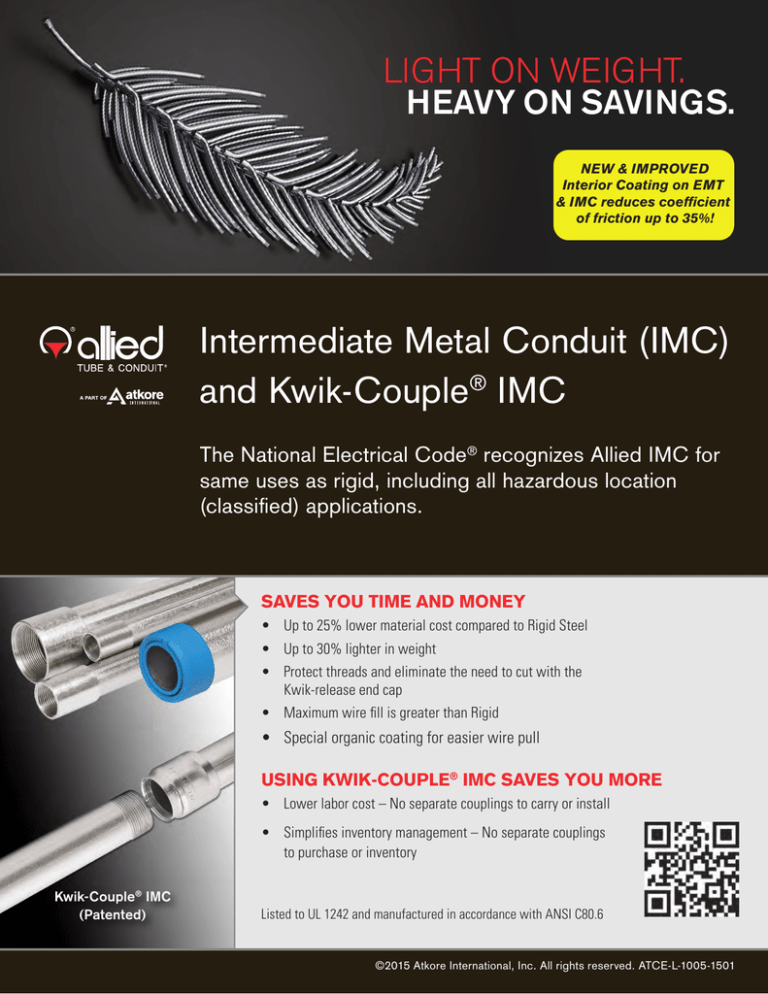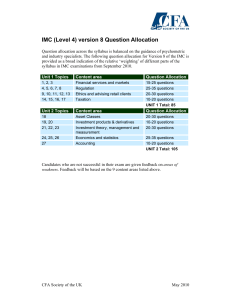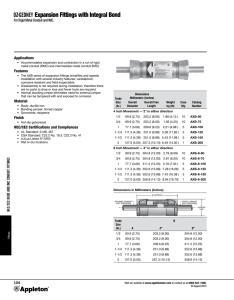
LIGHT ON WEIGHT.
HEAVY ON SAVINGS.
NEW & IMPROVED
Interior Coating on EMT
& IMC reduces coefficient
of friction up to 35%!
Intermediate Metal Conduit (IMC)
and Kwik-Couple® IMC
The National Electrical Code® recognizes Allied IMC for
same uses as rigid, including all hazardous location
(classified) applications.
SAVES YOU TIME AND MONEY
• Up to 25% lower material cost compared to Rigid Steel
• Up to 30% lighter in weight
• Protect threads and eliminate the need to cut with the
Kwik-release end cap
• Maximum wire fill is greater than Rigid
• Special organic coating for easier wire pull
USING KWIK-COUPLE® IMC SAVES YOU MORE
• Lower labor cost – No separate couplings to carry or install
• Simplifies inventory management – No separate couplings
to purchase or inventory
Kwik-Couple® IMC
(Patented)
Listed to UL 1242 and manufactured in accordance with ANSI C80.6
©2015 Atkore International, Inc. All rights reserved. ATCE-L-1005-1501
IMC AND RIGID STEEL CONDUIT – HOW DO THEY COMPARE?
•
NEC: IMC is covered by Article 342 in the National Electrical Code® (NEC). Rigid steel
conduit is covered by Article 344. The “Uses Permitted” sections in each article
allow IMC and rigid steel conduit to be used “under all atmospheric conditions and
occupancies.” In other words, the NEC allows IMC to be used wherever rigid steel
conduit is allowed.
•
Hazardous Locations: Both IMC and rigid steel conduit are permitted for use in
hazardous locations, including Class I, Division 1 (see NEC 501.10(A)(1).
•
UL Listings: IMC is listed to UL Safety Standard #1242. Rigid steel conduit is listed to
UL Safety Standard #6. Since IMC was introduced long after rigid steel conduit, the UL
IMC standard contains much more exacting requirements such as a beam-strength
test and a threaded-conduit pullout test. Tests for corrosion protection are the same in
both standards.
•
Equipment Grounding Conductors: Both IMC and rigid steel conduit are excellent
equipment grounding conductors and are recognized for that use in NEC Article 250.
For additional information, visit www.alliedeg.us click on ATC Conduit and download
the GEMI (Grounding and Electro-Magnetic Interference) software analysis program
under “Resources and Links”. • EMF Shielding: IMC and rigid steel conduit are both very effective in reducing electromagnetic fields at power frequency
60Hz. Research performed by Georgia Tech has shown steel conduit can reduce magnetic fields up to 95%. Check out the
GEMI software analysis and the Georgia Tech research reports on EMF at www.alliedeg.us
• Direct-burial/Concrete Encasement: The UL White Book contains the same installation guidelines for IMC and rigid
steel conduit in corrosive environments such as direct-burial and concrete encasement applications.
• Strength Comparison: IMC is stronger than rigid. Tensile strength testing is not a requirement of the UL steel
conduit standards. However, random testing has found the following are typical mechanical properties:
Ultimate Tensile Strength
GRC:
IMC:
55,000 psi
60,000 psi
Modulus of elasticity:
Yield Strength
35,000 psi
50,000 psi
Both Products: 30,000,000 lb/in2 (psi)
• Expansion/Contraction: The co-efficient of expansion for IMC and rigid steel conduit is the same: 0.650 x 10-5
(0.0000065 in. per inch of conduit for each °F in temperature change).
• Fire-Resistance: Both IMC and rigid steel conduit are considered noncombustible by the building codes. If you are
penetrating a fire-rated wall with either IMC or rigid, the International Building Code allows the annular space to be filled
with common building materials such as cement, mortar or grout, instead of a fire-stop system.
• Greater Wire Fill: Since IMC has a thinner wall than rigid steel conduit, the maximum wire fill for IMC is greater
• Easier Wire Pull: The interior of IMC is coated with a special organic coating to allow for easier wire pull.
For a summary of the results of the original UL Fact-Finding report comparing IMC to rigid steel conduit, go to
www.alliedeg.us under Resources.
800-882-5543
www.alliedeg.us


